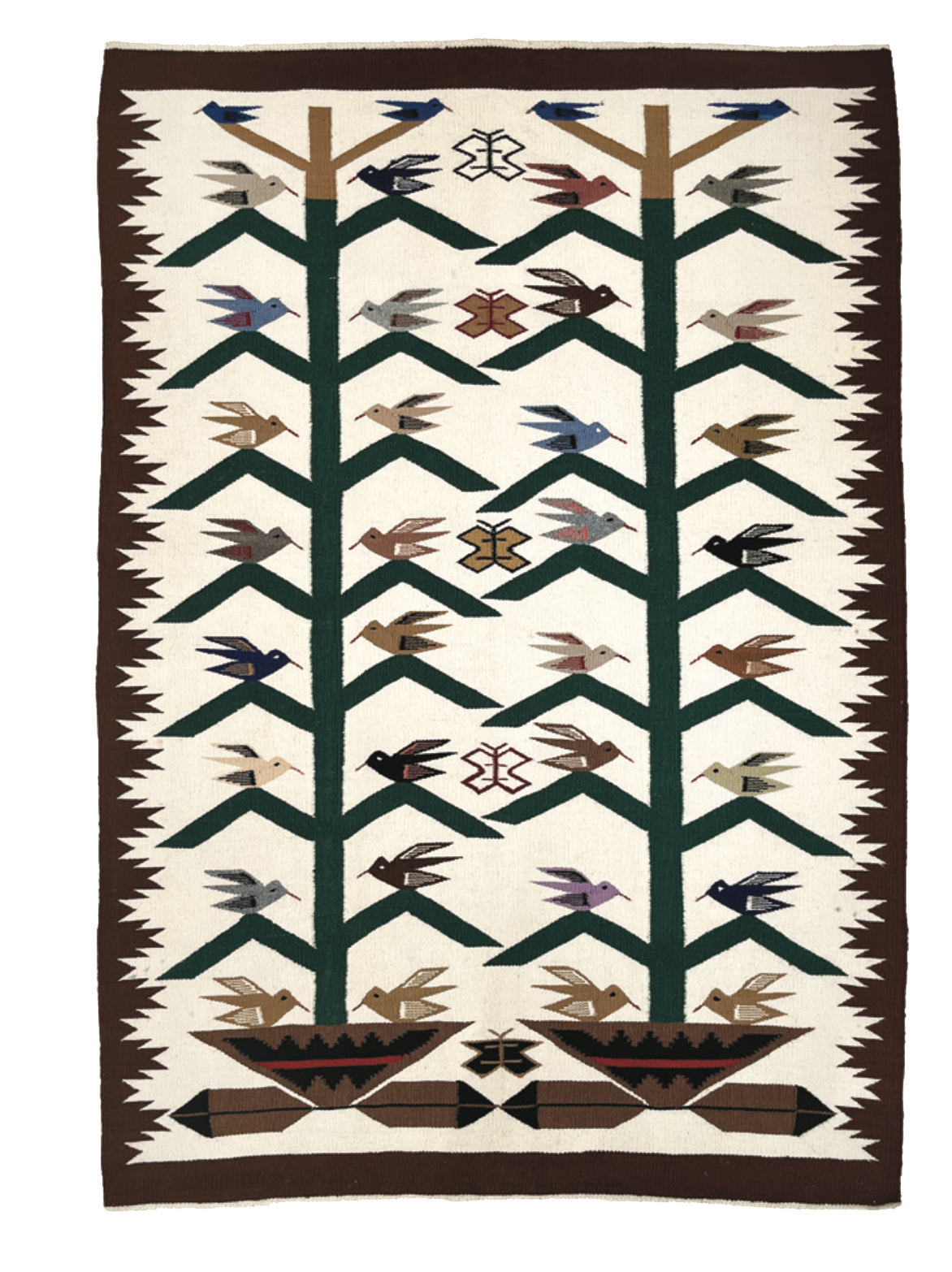Some information may be outdated.
Enter the Moab Museum’s south gallery on June 23 and you’ll feel transported into a trading post: historic and contemporary textiles will be on display as part of the new exhibit, “The People’s Tapestry: Weaving Tradition in Navajo Culture,” which will feature over eighty textile works made by Navajo artists.
“[This exhibit] is a chance to host Navajo weavers and showcase the long tradition of weaving among the Navajo People,” said Tara Beresh, the museum’s curatorial and collections manager. “Displaying historic alongside contemporary textiles demonstrates the ways that weaving traditions have changed, yet also remained consistently symbolic, vibrant, and most importantly, an essential aspect of life to the Navajo People.”
“It’s important when we are exhibiting elements from the past, that we acknowledge their impact on the present,” she said.
The textiles being displayed are part of six different collections including local collections and a contribution from the Utah Division of Arts and Museums’ traveling exhibition, “Navajo Children: Weaving the Future.”
When displayed all together, the textiles create a timeline: the fibers, dyes, and designs of the textiles “reflect the impacts of resource availability, oppression by the U.S. government, and/or successes from trading post commerce,” Beresh said. She highlighted an example from the Late Classic Period, from 1863 to 1950, when textile patterns began to include motifs inspired by Mexican-Saltillo serapes and Spanish market interests, like diamonds and broad, wavy bands.
The exhibit will also include information on the fibers used to weave textiles: the fleeces of the Navajo-Churro sheep, a domestic breed originating from Spanish sheep, are used in a number of textiles in the exhibit. According to the Livestock Conservancy, a nonprofit dedicated to protecting heritage breeds, “conservation of the Navajo-Churro sheep is essential to the continuance of Navajo pastoral lifeway.”
Beresh hopes the exhibit can teach something to both Moab visitors and locals: to visitors, a history of the textiles they may be hoping to purchase as souvenirs of their travels; to locals, a reminder of the prevalence of Navajo communities in Moab and across the region.
“I hope that exhibiting a large variety of textiles, both historic and contemporary in a way that feels less like an art show and more like a trading post, will help to immerse guests in the power and beauty imbued in these works,” she said. “The exhibition is meant to highlight the [Navajo] People, and the cultural implications of their weaving, not Euro-American affluence, commerce, or collecting. Weaving is a way of life and a form of survival.”
While the exhibit is on display, there will also be a number of live demonstrations: the museum invited “Navajo weavers and local experts in sheep rearing and wool processing to demonstrate their crafts and to answer questions about how and why they weave,” Beresh said. Weaver Anita Hathale will visit the museum in July to host a demonstration; weaver Maxine Nez will do the same in August; and Sam Cunningham, owner of Cunnington Farms, will give a talk on Navajo-Churro sheep and textiles in August.
The museum strives to make its exhibits and demonstrations widely accessible. Earlier this month, the museum joined “Museums for All,” an access program of the Institute of Museum and Library Services. The program grants free admission to the museum for anyone receiving food assistance benefits through the Supplemental Nutrition Assistance Program (SNAP) with presentation of a SNAP Electronic Benefits Transfer card.
“Museums for All is part of the Moab Museum’s broad commitment to seek, include, and welcome all audiences,” a press release said. The program is in place at more than 850 museums across the country.
Event details can be found at www.moabmuseum.org. The Moab Museum is open Tuesday-Saturday from 10 a.m. to 6 p.m. Admission is $10 for adults; $8 for seniors, students, children, and active duty military; $30 for a household or family; and free for children under 7. Admission is free for museum members.
Appreciate the coverage? Help keep local news alive.
Chip in to support the Moab Sun News.





